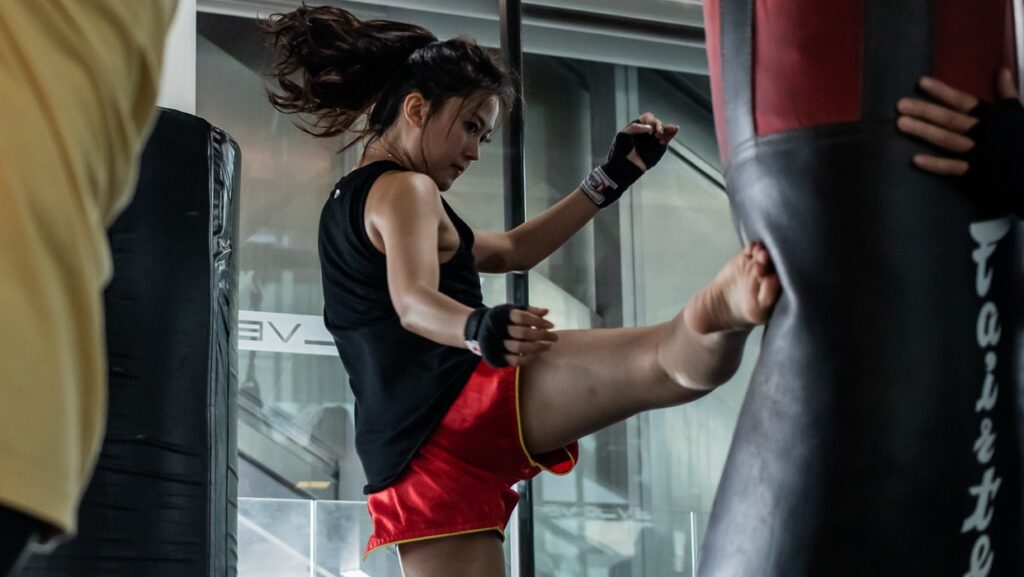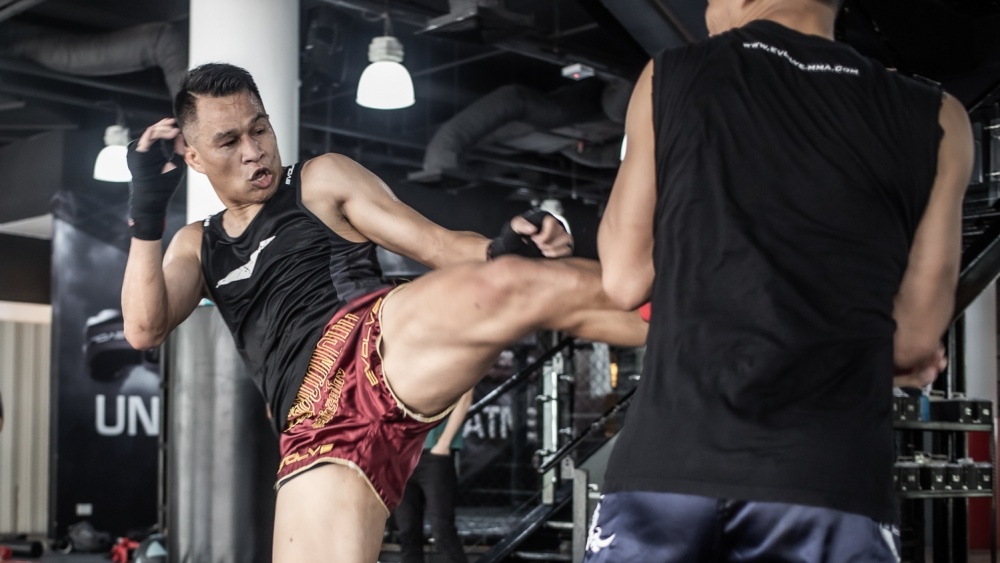In Muay Thai you have to be able to adapt to the offensive tactics of your opponent and vary your guard positions accordingly. Variations can come in the form of minor or major adjustments to tried and true defensive stances, and this is the case with a long guard variation called the Dracula guard.
It’s difficult to say who named this guard or first used this variation but it’s believed to have been seen for the first time during the Golden Era when aggressive up-the-middle attacks were breaching the popular long guard position.
During this time, the ring was dominated by aggressive fighters and technique specialists delivering as much punishment as possible. Statistics used to measure the amount of punishment received included the number of stitches received, so variations to defensive guards that had been tried and tested needed modifications. The need to develop defensive techniques to keep their heads from being knocked off by an elbow or uppercut that was getting through the long guard out of necessity was created.
Although the Dracula guard is not impenetrable, it is a guard that can be used and utilized to defend against an aggressive fighter. However, it’s highly advisable to avoid using this guard throughout a fight against anyone who can eventually find the holes in it, as is the case with relying solely on any one defensive move.
Why Use The Dracula Guard
Muay Thai fighters need to have an arsenal of defensive weapons at their ready, including guards to block kicks, knees, and elbows. But like with all defensive guards, they are not without their weak points. Take the basic Muay Thai shell guard for instance.
This basic guard position leaves a line for elbows to get through, as well as uppercuts, and is the same for the basic long guard. Defensive guards consistently need slight tweaks because of the new angles fighters are using to strike their opponents.
The Dracula guard is used when the centerline of the Muay Thai guard or long guard isn’t protecting your head and face enough. From the Dracula guard position, even if your opponent pulls down your lead hand, comes over the top, or throws a left hook, your head and chin are still protected by the rear arm draped across the front of your face.
The rear arm across your face mimics Dracula’s method of hiding behind his cape as he did in classic Dracula movies. The rear arm covering your face is to protect you from elbows on the inside as well as elbows and punches from the outside. Keep your chin down and tucked into your shoulder and your eyes up and on your opponent.
How To Apply The Dracula Guard
The Dracula guard can be executed from either the southpaw or orthodox stance. It’s characterized by an upright position in which the head is lowered with the chin tucked down, the lead hand is extended straight out, and the rear arm makes a ‘V’ shape with the rear hand up on the lead shoulder. This creates a shield for the chin with the rear elbow. As with the long guard, a slight lean back is often part of the defensive movement or a reverse shuffle.
While the effectiveness of this technique can depend on various factors, such as the skill level of the fighter and the situation of the fight, the Dracula guard can be a valuable defensive tool in a Muay Thai fight.
Here’s a simple breakdown of how to get into the Dracula guard:
- The lead hand is extended out in a long guard position.
- The rear arm reaches around the face to create a ‘V’ shape, with the rear hand touching the lead shoulder.
- Keep your head down and chin tucked in behind your rear arm.
- Keep your eyes above your arm so that you can see your opponent.
Countering From The Dracula Guard
In Muay Thai it isn’t enough to just be able to use defensive techniques: you have to be able to counter out of your guard positions. When countering out of the Dracula guard, the lead hand is used to gauge the distance just as it does in the standard long guard. If you can touch them, you can strike them.
Developing a sense of distance and the reach of your offensive weapons is a valuable skill that time and practice will hone. Getting in and out of the Dracula guard effortlessly while effectively countering will take practice but over time you can master this defensive technique.
Rear Leg Knee Strikes
From the Dracula guard, you can measure distance with your lead arm fully extended in the long guard position and counterattack with a rear knee strike. Because of the overall coverage, you can block straight punches, hooks, and uppercuts. And once they are thrown, your opponent opens themselves up for a knee strike counter.
Combining Leg Sweeps With The Dracula Guard
Combining leg sweeps and the Dracula guard is possible. Remember timing is everything, with proper timing, you will be able to attack and counter accordingly, putting you in a better position with better finishes. Being able to combine both offence and defence is one of the key aspects of developing an all-rounded game and separates a good fighter from a great fighter.
Conclusion
Despite the effectiveness of the long guard, some weaknesses can be exploited, and adding the Dracula variation fills some of those gaps. No defence is impenetrable and the Dracula guard can leave you open to kicks, but you can counter these holes that are left open in your defence by checking the kicks or using backward motion evasive techniques.
Timing, technique, and counters are what make the Dracula Guard effective. As with any defence, knowing when to use it and when to change it up will be a part of your overall fight strategy.
You may also like:
Developing Your Own Muay Thai Combinations: A Guide To Fluid And Effective Striking Sequences
















